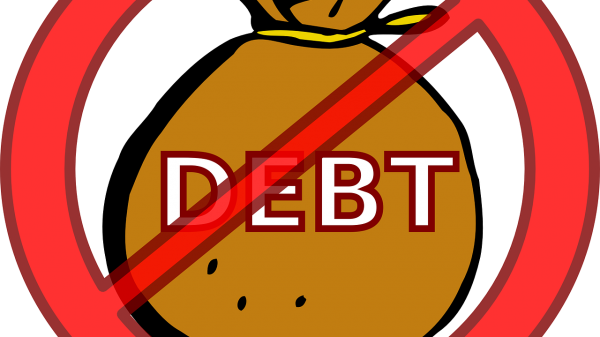The debt-to-income ratio is regarded as a significant element in analyzing your financial health. Although it does not directly affect your credit score, it does play a crucial part when applying for a loan, especially when you apply for a mortgage.
What is the debt-to-income ratio?
The debt-to-income ratio shows your financial health in terms of your monthly income and the total monthly debt obligations you have. It considers payments on your car loan, credit card, student loans, and all other debt-related obligations. Since it represents a ratio of your income and debt payments, it is a useful measure for banks. It is used by banks and lenders, in general, to see how much additional debt you can service without any damage to your financial health. That is, the debt to income ratio shows how much additional debt you could be able to repay, based on your income and current debt (if any).
There is a difference in debt to income ratio in terms of mortgages, which means that you should be aware of two concepts of debt to income ratio, front-end debt to income ratio and back-end debt to income ratio. The front-end ratio is known as the housing ratio. This ratio shows the portion (percentage) of your income that would be reserved for your housing expenses (for instance: mortgage payments and real estate taxes).
The back-end ratio provides insight into the portion of your income that is needed to service all of your debt obligations on a monthly basis. The debt obligations consider credit card payments, car loans, personal loans, student loans, and all other debt obligations recorded on your credit report. It also includes your mortgage payments as well as housing expenses.
The importance of debt to income ratio
Keeping track of the debt-to-income ratio is important for both you and your bank. Analyzing your debt-to-income ratio regularly could be beneficial because it can help you avoid the possibility of high indebtedness. Moreover, it will provide a clear picture of your debt level and the effect of an increase in your debt. Thus, when you monitor your debt to income ratio, you can make a better decision regarding purchases on credit or applying for additional loans, which means that it will serve as a method that will enable you to see if you are going to have problems in the future to service your debt obligations. In addition, having a low debt-to-income ratio can have a positive effect on the interest rate you are paying on a new loan. This is in the sense that banks can define the interest rate based on your risk level. Thus, a low debt-to-income ratio signals a lower risk level, which in turn could motivate your bank to lower your interest rate.
Debt to income ratio is important to banks because it is a measure that will show them whether you pose a risk or not. This is in the sense that banks can calculate your ability to repay the outstanding debt or the financial ability to service a new loan. Therefore, through the debt-to-income ratio, banks are able to decide whether you are creditworthy or not.
What debt-to-income ratio do banks look for?
Understanding the importance and the idea behind the debt-to-income ratio imposes the need to understand what a good debt-to-income ratio is. Namely, what level of debt to income ratio is acceptable by banks and lenders? Additionally, you should know the debt-to-income ratio that will not leave you vulnerable to changes in your income and/or expenses level.
A general rule is that your debt-to-income ratio should be 36% or less of your gross income. Having a debt-to-income ratio of 36% is considered acceptable because that way, you could be protected against some unforeseen decrease in income or unexpected increase in expenses. However, you should keep in mind that the lower the ratio, the better for you personally as well as for your loan application.
According to the Consumer Financial Protection Bureau, you could have a maximum of 43% debt to income ratio and still be able to fulfil the requirements for a Qualified mortgage.
How do you know your debt-to-income ratio?
It is relatively easy for you to estimate your debt-to-income ratio. It is calculated by dividing your total monthly debt by your gross monthly income, or you could use the online calculator to estimate your ratio.
Debt to income ratio (DTI) = total monthly debt payments/gross monthly income
For instance, let’s say that your monthly obligations are: a mortgage of $900, student loans of $300, and $130 for a car loan. Thus, adding your debt obligations show that your total monthly debt payments are $1,330. For instance, your gross monthly income is $5,000. Then it turns out that your DIT is 26.6% ($1,330 divided by $5,000).
The calculation mentioned above is to find out your DTI ratio. You could also calculate the maximum monthly debt obligation you should have based on your income and the rule of 36 per cent. Namely, you can multiply your monthly income by 36%. Say you have a gross monthly income of $2,800. Then, multiplying $2,800 by 0.36 equals $1,008. This means that the maximum monthly debt obligation you can afford is $1,008.
What to do if your debt-to-income ratio is high?
Even though you know the idea behind the debt-to-income ratio and how to calculate it, you should also know what to do if your DTI is high. As mentioned, with a high debt-to-income ratio, you are on your way to reaching a point when you cannot service your monthly debt obligations. Thus, you should inform yourself about the possible ways how you could lower your DTI.
- Increase monthly income – one thing you could do is to increase your monthly income. You can do this either by taking on a second job or asking for a raise from your employer.
- Pay off loans early – if you have enough money, you should consider paying off some of your debt earlier than consider some strategies for paying off a loan. By paying off part of your debt, you will decrease the total monthly debt obligations.
- Credit card usage – you should limit the usage of your credit card. Not using your credit card extensively will limit the increase of your debt. Thus you will be able to maintain a stable DTI ratio and lower the same in the future. You will lower the DTI as you repay the outstanding debt on your credit card.
The debt-to-income ratio is regarded as an important element in your loan application. Namely, high debt to income ratio could signal that you are in the danger zone. Thus, you could run into problems when servicing your debt obligation. In contrast, having a low debt-to-income ratio could enable you to negotiate a lower interest rate. You should always keep track of this ratio to know if you are on your way to worsening your financial health.







